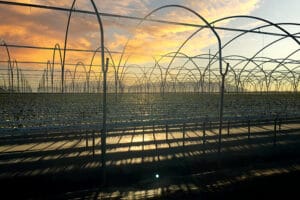Cassandra Toves
Cassandra graduated from Cal Poly San Luis Obispo with a degree in Agricultural System Management focused in irrigation. While attending school she worked for an agricultural irrigation company assisting with irrigation design and managing installation projects. After graduation she ran all store operations for multiple locations along the central coast as well as doing irrigation designs for larger projects. Cassandra has always been most interested in substrate growing and automation. Coming from a younger generation, she sees the need for agriculture to become more automated and is eager to help growers attain those goals. Her experience has allowed her to pursue her passion for design and installation of automated irrigation systems, focusing mainly on substrate and greenhouse applications.




























